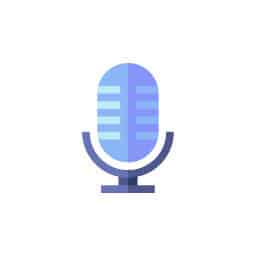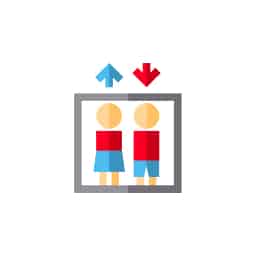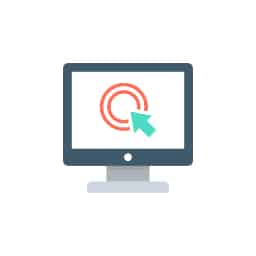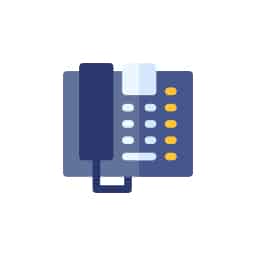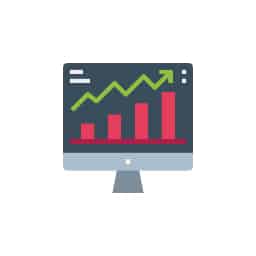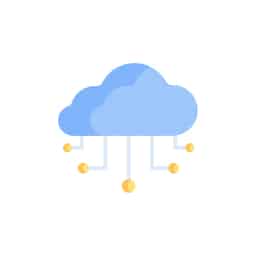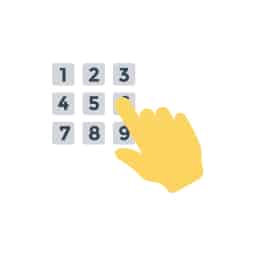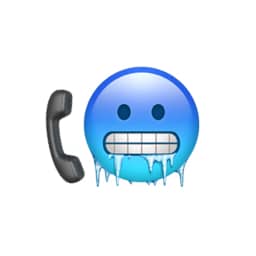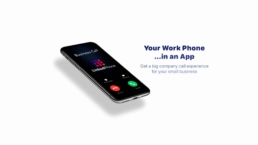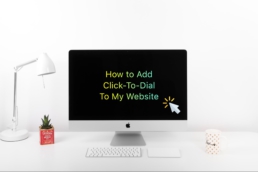Marketing Funnel Basics for Entrepreneurs & Small Business Owners
What is a marketing funnel?
A marketing funnel is a visualization of the stages of your customer’s journey, from awareness to consideration, purchasing, and beyond. Marketing funnels help teams plan and map out how to attract, engage, and convert potential leads through marketing materials like ads, landing pages, and custom-tailored content. They also help marketers to measure the success of various effort to win over prospects, increase brand loyalty and awareness.
For many, the hardest part of running a small business is learning how to successfully market their product and reach their ideal customers. Deciding which social media platforms to focus on, how to optimize your email content, and where to spend money on ads can be very confusing.
Before you start spending money though, it’s important to understand how your marketing content will attract, educate, and convince people to buy your product or service. The marketing funnel is a tried and true way to organize your content and grow your business.
LinkedPhone serves the small business community with local & toll-free business numbers that work with your cell phone, desk phone, & laptop. Add a 2nd phone number to your cell phone with our mobile app. Talk & text with clients on the go. Add team members too. Finally break free from the desk phone. At LinkedPhone, freedom rings! 🔔📱💻☎️
What is a marketing funnel?
A marketing funnel is a strategy for how you intend to guide potential customers from knowing nothing about what your company does, to being a loyal paying customer. This includes every interaction you have with your target audience whether it’s via social media, email, TV commercials, Google Ads, webinars, or conferences. This content helps them learn more about your brand and creates an urge to buy your product or services.
The marketing funnel acts as both a lead generation tool, bringing new customers into your brand’s orbit, and a lead nurturing tool, keeping potential customers engaged over time. Since the customer journey never really ends, the marketing funnel also includes the sales funnel, the period when your sales team is actively speaking with a prospect until they become a buyer. Then they go back into the marketing funnel.

Modern marketing trends
Historically, marketers focused on creating engaging advertisement copy. They created commercials, magazine ads, and more recently, online ads. But today’s modern consumers are not as easily persuaded to purchase, no matter how flashy the advertisement.
In fact, 82% of marketers focus their energy and investment on content marketing. This can range from customer case studies to thought leadership content (much like this article). Buyers want information that helps them do their jobs better and showcases how your business can be a good partner in their efforts.
Social media is the most popular way to get your content in front of your audience. It doesn’t matter who your customers are, there is a social media platform that gives you a direct line to your target buyer. Eight in ten companies invested in social media marketing during the past most recent years.
Lastly, we’re seeing a resurgence in the popularity of email marketing. The caveat is that you must send highly personalized messages and communicate transparently and with authenticity. Thought leadership content and special offers are very effective over email.

B2B vs B2C
How you build and fill your marketing funnel with content depends on whether you are a business-to-business (B2B) company or a business-to-consumer (B2C) company. Corporate service providers and software companies are B2B organizations. Retailers and mobile game developers are B2C companies. Some businesses are both, like telecommunications companies, with a division for end consumers and another department for business services.
If you run a B2B company, your marketing funnel is going to focus on closing deals. Your goal is to educate your potential customer on the benefits of your offerings and convince them to switch away from their existing vendor. This sales cycle can take weeks, or months, to complete.
For a B2C company, your aim is to demonstrate the value of your product both in functionality and against the products provided by your competitors. These sales cycles are much shorter, taking hours or days. Your customers already know the problem they want to solve, you just need to get your solution in front of them.
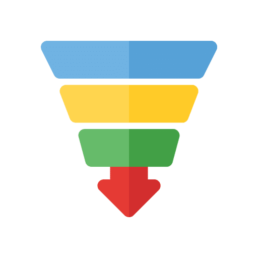
Marketing and sales funnels – what’s the difference?
In the past there was a clear wall between marketing and sales activities. The two departments had no insight into how the other team did their job, sourced leads, and closed leads. Today, the sales funnel is considered part of the marketing funnel. This helps both departments operate under the same rules of engagement instead of “throwing leads over the fence” and hoping for the best.
The marketing funnel is intended to pre-qualify leads before they reach a sales rep. That makes the sales reps’ jobs easier since the lead is already educated on your product’s value. In the sales funnel, you want prospects to take action with the end goal of purchasing your product.
The three stages of the marketing funnel
The marketing funnel can be divided into 3 sections: Top of funnel (ToFu), middle of funnel (MoFu), and bottom of funnel (BoFu). At the top are people that are just learning about your company and what you do. At the bottom, are people who are approaching a decision to purchase, or not.
Top of Funnel
The top of the funnel is all about building awareness of your brand and company. At this stage, you don’t want to be in the weeds about pricing and product offerings. The goal is to be helpful and provide educational content while building brand awareness and relationships.
You may not know who the people you are engaging with even are at this stage. They haven’t opted-in to be contacted yet. But as soon as they do, all of their historical engagement will be attached to their new account in your CRM or POS system. At this point, they’ll move on to the middle of the marketing funnel.
Types of content include:
- Blog posts
- Podcasts
- How-to articles
- Videos
- Infographics
Middle of Funnel
The middle of the funnel is designated for consideration. This means you’re giving your audience proof that your product or service is worth purchasing. You might explain how you compare to competitors, offer technical details needed to make a decision, and justify your statements with social proof from existing customers.
Show prospects that you know how to solve their problems. Often, at this stage, prospects will have narrowed down the list of vendors that they think can help them with their problem.
Types of content:
- Case studies
- White papers
- Gated content like blog posts or ebooks
- Reports
- Competitive comparisons
- Webinars
- Technical guides
Bottom of Funnel
The bottom of the funnel is where sales is actively engaged with the customer. All of the work of the first two stages comes together here. Your sales rep is now discussing price, features, contracts, and negotiating with the prospect. Once this prospect decides to purchase, their buyer’s journey is complete – for now.
Types of content:
- Free trial
- Demo request
- Customer testimonials
- Access to additional tools and apps
- Implementation/ set-up guides
Marketing funnel best practices
1. Drive the right traffic to your website
You don’t want to reach the widest audience possible. You want to reach the audience that is best suited to purchase from you – your ideal customer profile. If you’re a B2C company, it won’t serve you to include business owners in your marketing outreach. If you’re a B2B seller, reaching a wide audience on Instagram isn’t going to increase your bottom line.
Focus on the online platforms that your ideal buyers are most likely to use. For B2C, you’ll find a lot more success on Instagram and Facebook for driving traffic to your product pages. For B2B, Twitter and LinkedIn are very effective.
2. Make sure your content works on all devices
All marketing outreach should be optimized for each device your customers are likely to use including computers, tablets, and mobile phones. You will lose significant traffic if it’s hard to read your emails or web pages.
3. Remember that your marketing funnel is about nurturing leads
The marketing funnel creates a path to becoming a buyer. You usually won’t see any commitment to purchase right away from a new lead. Your goal is to move them further through the funnel with great content.
4. Know how you want to measure successes
There is a difference between vanity metrics and actionable metrics. Vanity metrics include measurements like, how many page views one of your landing pages receives or number of Twitter followers. Actionable metrics include your ebook download rate or how many people filled out your contact form.
Measure information that you can make business decisions from. Creating marketing content takes a lot of time, so if you see that an email campaign has a high open rate, but doesn’t lead to sales, it should be scrapped in favor of another approach.
5. Run A/B tests to improve your conversion rates
There is no holy grail of marketing strategies. What works well now may not work so well in 6 months or a year. Buyers’ expectations change and tactics that were fun at one time can easily become annoying when every company uses them.
Try out different email sequences or landing pages to see which leads to higher conversion rates. Your instinct may tell you one thing, but hard data doesn’t lie.
Use marketing funnels to attract customers and build trust
Marketing funnels are a useful way to help you organize content that answers your target customer’s questions and build trust. Existing customers can benefit from the content as well, leading to larger contracts or expanding their use of other products and services you provide. If creating a content marketing plan is overwhelming, consider hiring a full-time marketing manager or marketing service to help you develop an effective marketing funnel for your business.
Business Growth Toolkit
Get the latest thought leadership insights on growing your business plus occasional LinkedPhone updates. We respect your inbox!
Small Business Resources
A special high five to Tahera Ali Khan for her outstanding research and contributions to this article. We love working with and supporting like-minded entrepreneurs. Thank you Tahera! ❤️
Get In Touch
We would love to hear from you.
Please contact us at any time with questions or feedback.



